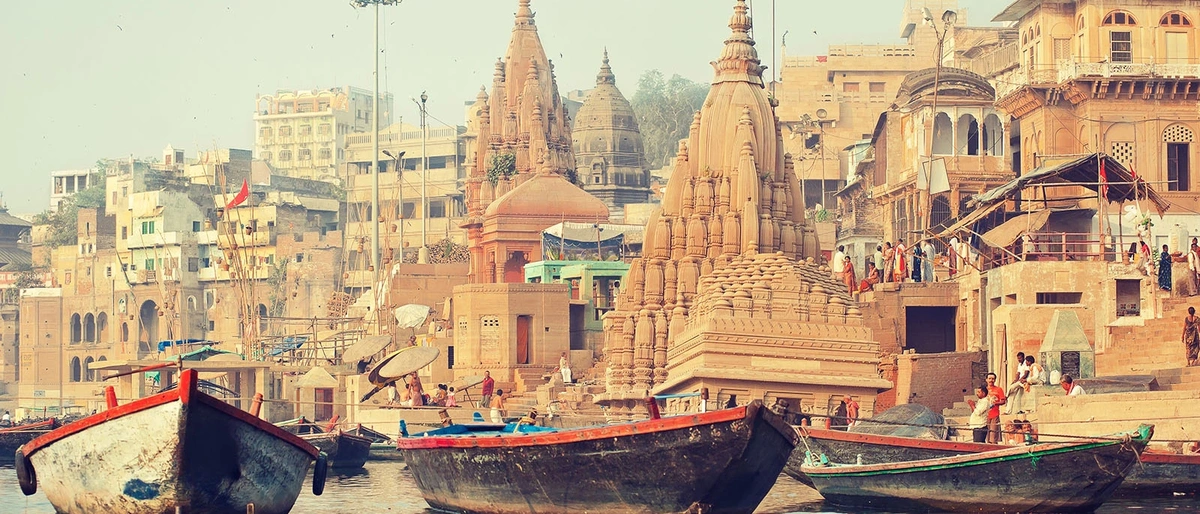Varanasi, also known as Benares or Kashi, stands as one of the oldest continually inhabited cities in the world. Nestled on the banks of the sacred River Ganges in Uttar Pradesh, India, this ancient city is a central hub for Hinduism, drawing pilgrims from across the globe.
The spiritual heart of India, Varanasi is a city where life and death coexist, offering a unique and profound glimpse into the cycle of life, deeply rooted in religious traditions and rituals. The ghats of Varanasi are perhaps the most iconic aspect of the city. Over 80 ghats line the river, each serving a specific purpose, from ritual bathing to cremation.
The Dashashwamedh Ghat, one of the oldest and most significant, is renowned for its evening Ganga Aarti ceremony. This daily ritual, involving fire, chants, and music, is a mesmerizing spectacle that attracts both devout pilgrims and curious tourists. Another notable ghat, Manikarnika, is a major cremation site where the cycle of life and death is vividly and respectfully on display. The ghats are a microcosm of the city itself – teeming with life, spirituality, and history.
Varanasi is also home to the revered Kashi Vishwanath Temple, dedicated to Lord Shiva. This temple is one of the twelve Jyotirlingas, the holiest of Shiva temples, and is a focal point for worshippers. The temple’s history and its significance in Hinduism make it a must-visit for anyone looking to understand the spiritual essence of Varanasi. Just a short distance away, the ancient site of Sarnath offers a tranquil contrast. It is here that Lord Buddha gave his first sermon after attaining enlightenment, making it a key pilgrimage site for Buddhists. The stupas, ruins, and the Sarnath Museum add layers of historical and religious context to any visit.
Culturally, Varanasi is a tapestry of music, dance, and art. The city has been a significant center for Indian classical music, with legendary musicians like Ravi Shankar hailing from here. Attending a live performance of classical music or dance is a cultural immersion into the artistic heritage of the region.
The culinary scene in Varanasi is a reflection of its rich cultural heritage. The city’s street food is legendary, with must-try items like kachori sabzi, chaat, and the famous Banarasi paan, a betel leaf preparation that is a local favorite. The creamy lassi, a yogurt-based drink, is another delight, with Blue Lassi Shop being a popular spot among tourists. The food in Varanasi is not just a treat for the taste buds but also an insight into the local lifestyle and traditions.
Visiting Varanasi is a journey into the depths of spirituality, history, and culture.
Where to Go
Highlights
- Ghats of Varanasi: The city is famous for its ghats, with over 80 lining the Ganges. Key ghats include Dashashwamedh Ghat, known for the evening Ganga Aarti ceremony, and Manikarnika Ghat, a major cremation site.
- Kashi Vishwanath Temple: One of the most important Hindu temples dedicated to Lord Shiva, located in the heart of Varanasi. It attracts thousands of pilgrims daily.
- Sarnath: Located about 10 kilometers from Varanasi, Sarnath is a significant Buddhist site where Lord Buddha gave his first sermon. It features stupas, ruins, and the Sarnath Museum.
- Ramnagar Fort: Situated on the opposite bank of the Ganges, this 17th-century fort and palace is the ancestral home of the Maharaja of Varanasi. It houses a museum with vintage cars, royal costumes, and historical artifacts.
- Assi Ghat: The southernmost ghat, where pilgrims bathe before worshiping Lord Shiva at a nearby temple. It is also a popular spot for tourists to enjoy a peaceful atmosphere and boat rides.
When to Go
The best time to visit is during the winter months from October to March, when the weather is pleasant and the city is alive with festivals and cultural events.
- Winter: (October to March) - The best time to visit Varanasi, with pleasant weather and numerous festivals, including Diwali and Makar Sankranti.
- Summer: (April to June) - Temperatures can soar, making it less ideal for sightseeing.
- Monsoon: (July to September) - The city receives moderate to heavy rainfall, which can disrupt travel plans but also offers a unique, lush view of the ghats.
Getting There
- By Air: Lal Bahadur Shastri International Airport (VNS) is the nearest airport, located about 26 kilometers from the city center. It is well-connected with major Indian cities and a few international destinations.
- By Train: Varanasi Junction (BSB) is a major railway station with connections to cities across India. Mughalsarai Junction, another important station, is about 10 kilometers away.
- By Road: Varanasi is accessible by road with regular bus services from nearby cities like Lucknow, Allahabad, and Patna.
Getting Around
- Auto Rickshaws and Cycle Rickshaws: These are common modes of transport within the city, ideal for short distances.
- Taxis and App-Based Cabs: Taxis and services like Uber and Ola are available for more comfortable travel.
- Walking: Many parts of the old city, especially near the ghats and temples, are best explored on foot.
Need to Know
- Language: Hindi is the primary language spoken, but English is widely understood in tourist areas.
- Currency: The Indian Rupee (INR) is the currency used. ATMs are readily available, and credit/debit cards are accepted at many establishments.
- Safety: Varanasi is generally safe for tourists, but it’s advisable to stay aware of your surroundings, especially in crowded areas. Be cautious with personal belongings and avoid isolated areas after dark.
- Health: Drink bottled or filtered water, and be mindful of food hygiene when eating street food.
